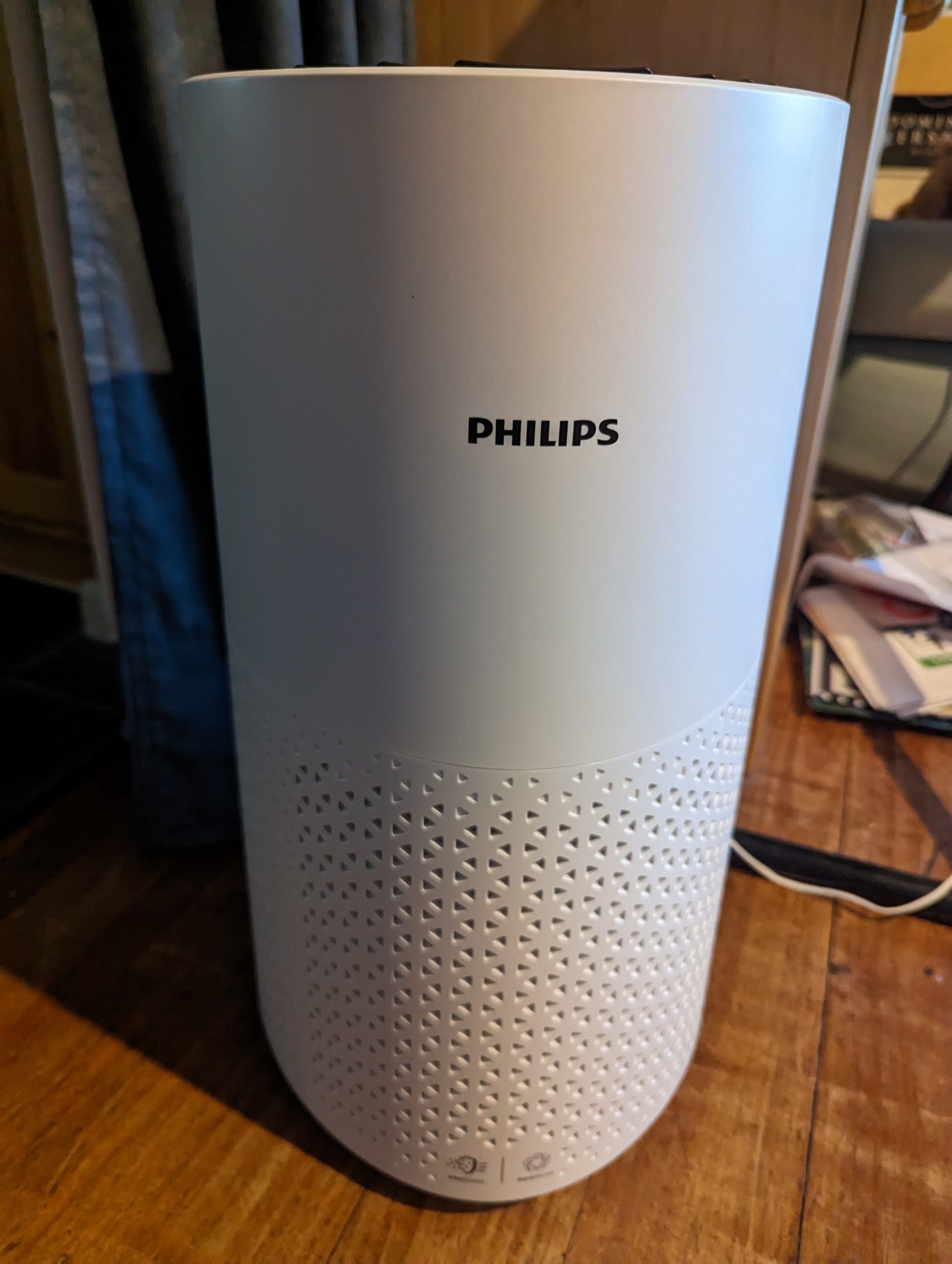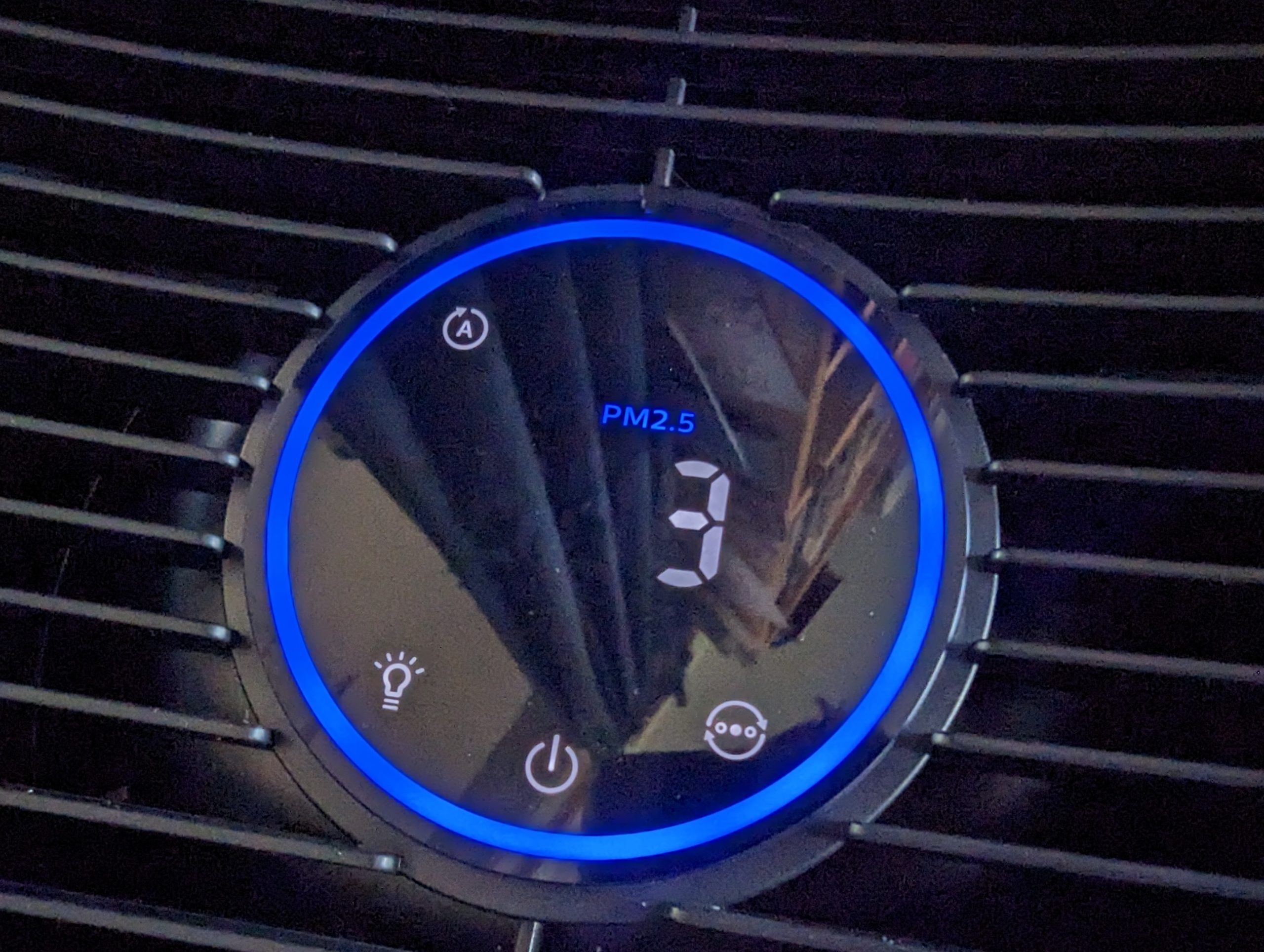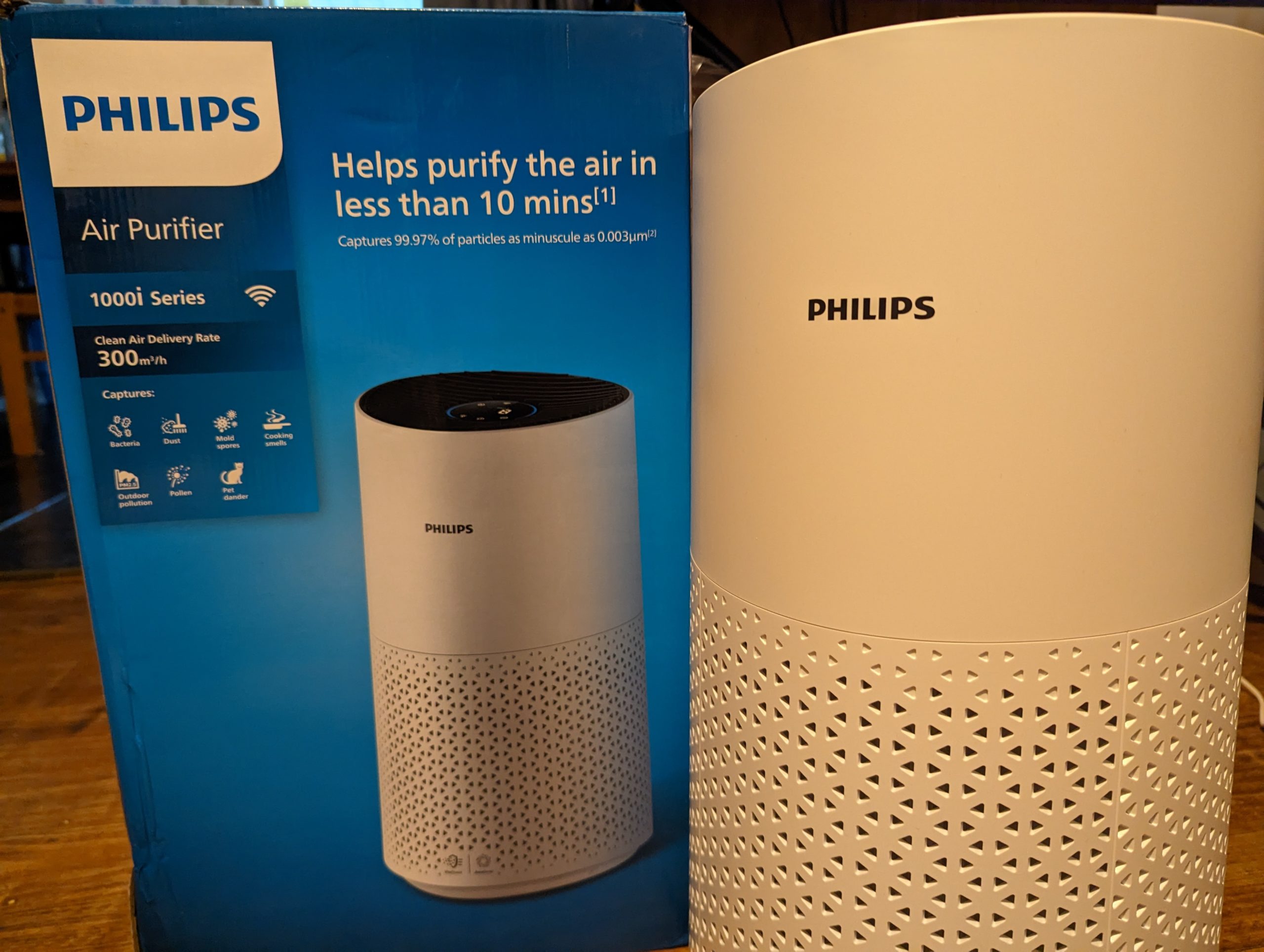Philips is one of the manufacturers in the electronics game that has a finger in almost every pie. They’re well recognised and respected across the market for their quality and value.
For me, coming into summer means allergies hit hard. For anyone that doesn’t suffer from it, hay fever can be pretty miserable; itchy eyes, runny nose and cough come on at a moment’s notice.
So, while I was — in total honesty — a little hesitant about the benefits but when a connected air purifier was offered to us on review, it was an interesting proposition, so here it is in my living room.

What is it?
From the name, you get a big clue; it’s an air purifier, but what exactly does that mean?
There are a lot of contaminants in the air we breathe every day, including dust, pollen, bacteria, viruses, odours, pet dander and other gases. While it’s not going to prevent these from being in the air, an air purifier will dramatically reduce them.
The review unit can clean a room that is 20 m2 in ten minutes.
In this case, the AC1715 has several features that will reduce contaminants in the air. While some of this comes across as pure marketing, the filter system is a 3-layer filtration with NanoProtect HEPA, active carbon and pre-filter. This also has an electrostatic charge to attract — and retain — smaller particles from the surrounding air.
Setup and operation
If you wanted to, you could simply plug it in, turn it on and forget it’s there. But that’s not the point of having a device like this. The device’s connection to your Wi-Fi and app is very simple; fire up the app, plug in the air purifier and follow the instructions on your phone screen.


The process took only a few minutes, and immediately I had visibility of the device and control of it available within the app.
For my personal use case, the review unit was put onto automatic and pretty much left alone. It was only when there were a lot of contaminants detected, and the unit really ramped up to high fans I even noticed it was there.
Depending on your use case, you may want to set the fans to a higher level as a default, but in a home living space; I found this unnecessary.
While it’s perhaps not useful in the moment, as there’s nothing you can really do about it, getting a notification that the quality of air in your space has dropped can be useful. Being the master chef that I am, burned some toast and, while at the other end of the house, got a notification that the air quality had dropped. Because of this, I returned to the living area to find a distinct smell of charcoal in the air. Thankfully, before the smoke detectors went off because, frankly, they’re really loud!
Is there advantages to daily use
Providing you find a place for this not to be under your feet, then you’re unlikely to notice it regularly. The only times I really noticed it were when it really ramped up following a bit of wind and the air being dusty and full of delightful pollen or during cooking when the levels peaked, and the fans were going flat out.
While on the surface, I just accepted that it was doing its job, I didn’t think I could prove that. But the weather did that for me on a couple of occasions when it had been breezy, and either; the pollen count was high or the air was particularly dusty.
This was a real highlight for me because on these occasions; I had been in the house not really aware of the prevailing wind or weather conditions. But when I left the house, on a particularly high pollen count day, in the short distance — < 20 meters — to my car, I had sneezed several times, at which point I realised perhaps the purifier was doing more than I thought.
Last weekend, with the hot conditions we had coupled with some wind, there was quite a bit of dust in the air. The amount of dust in the air was, again, something I was oblivious to until I went outside. Within minutes, my eyes felt dry and gritty, and I officially found myself appreciative of the presence of an air purifier in my home.
Should you buy one?
The really short answer is: That it depends…
It depends on your need, and while we’ve not had one for the first 17 years of living in our house, now the benefits are clear, and it’s clear that there isn’t a lot of cost in terms of energy use, it’ll be staying!

The positive effect it has had on my allergies, general comfort and knowing the quality of air in the home has improved is worth the investment in my eyes and nose. At $449.00, it’s not a cheap item, and for many, the cost is potentially a barrier to entry. My thoughts, though, are that the comfort levels it has already brought to me and others in my house with reduced allergens are truly wonderful and a worthwhile investment.
While we can’t definitively say that it has reduced bacteria within the home, it’s not unfair, given the other results, to believe that it can and has.
If you’re interested, you can pick one up through JB Hi-Fi, Bing Lee or Myer.
Disclosure Statement
Due to hygiene, the unit is not being requested for return.





















Discussion about this post